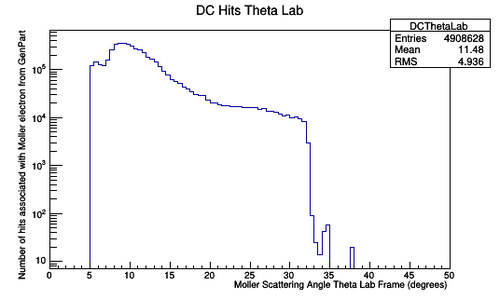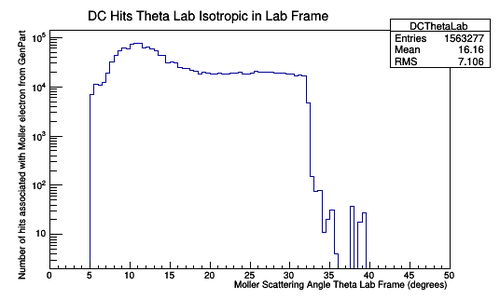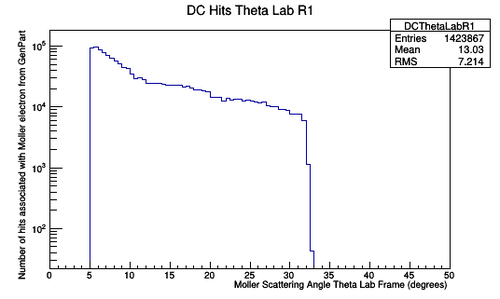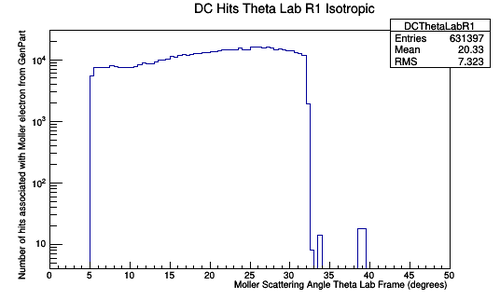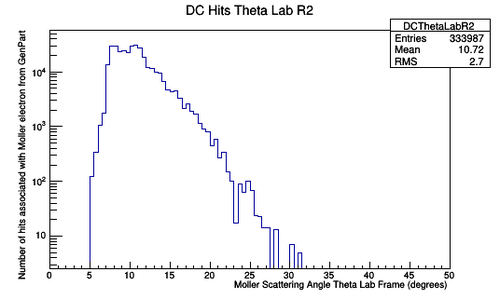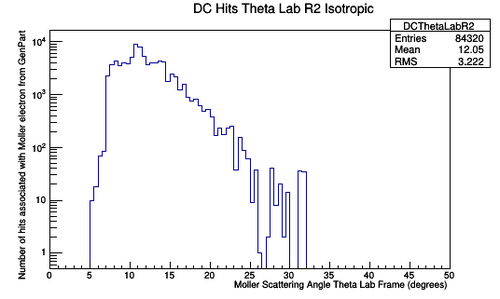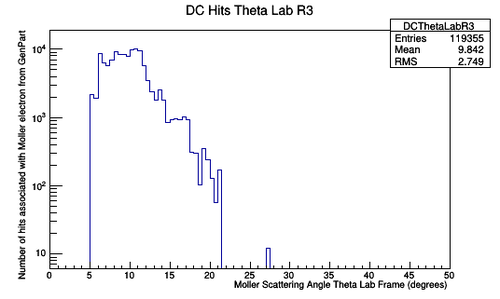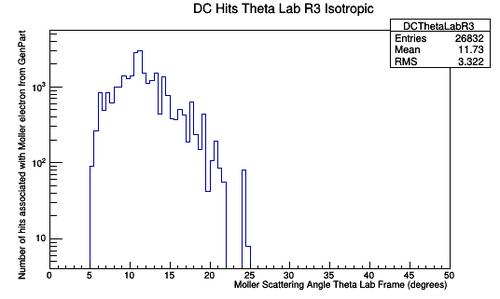Isotropic Spread in CM for 5 to 40 degrees in Lab Frame
Isotropic Spread in CM Frame for 5-40 degrees in Lab
As was done for the situation of 1000 events per degree in the lab frame of reference, the isotropic distribution of scattering angle theta in the center of mass frame can be weighted to reproduce a Moller differential cross-section.
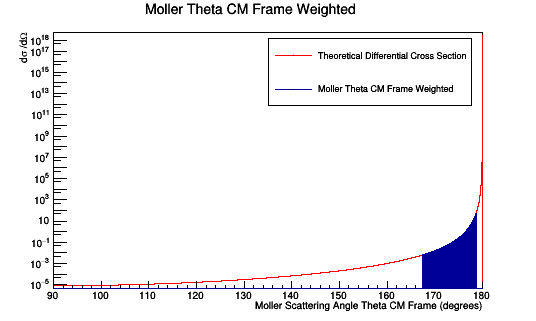
Similarly, as was done earlier, the center of mass frame is transfered to the lab frame.
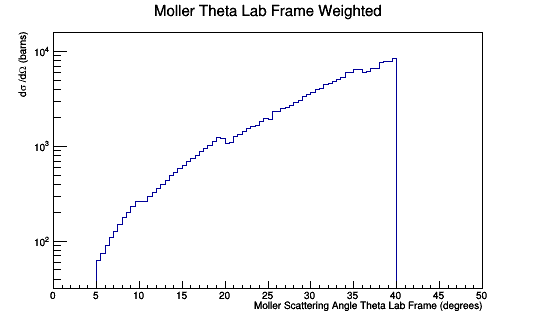
Since the dimension parallel to the direction of motion "compresses" with speeds approaching the speed of light, the number of events that occur at 5 degrees are different than 40 degrees. Collecting the number of events that occur within 0.5 degree bin width.
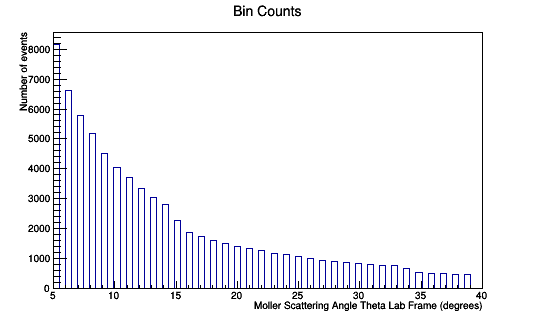
This can be plotted by dividing each entry into the bin by the number of events per that bin and multiplying by the corresponding weight factor.
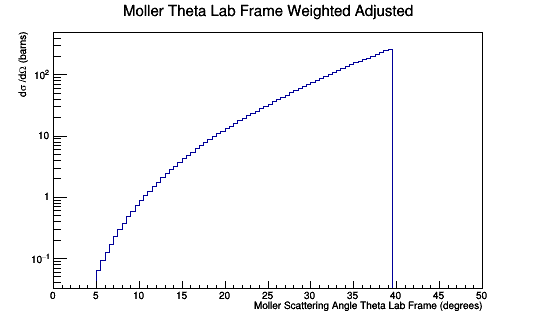
If we set the bin width for Theta in the Lab frame to be 0.01 degrees wide, then we can limit the number of times Moller events occur within such a range to once. This limiting corresponds to an isotropic spread of the scattering Theta in the lab frame.
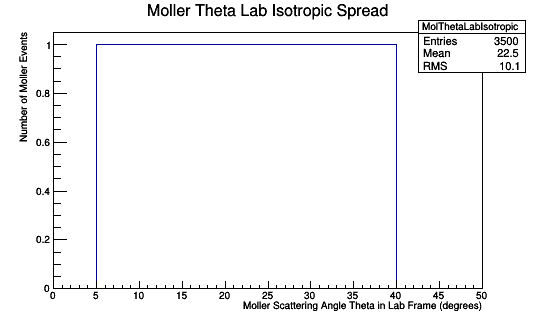
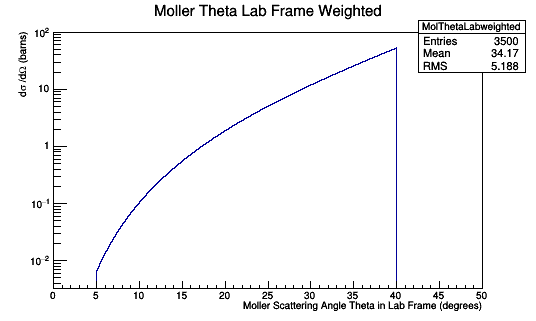
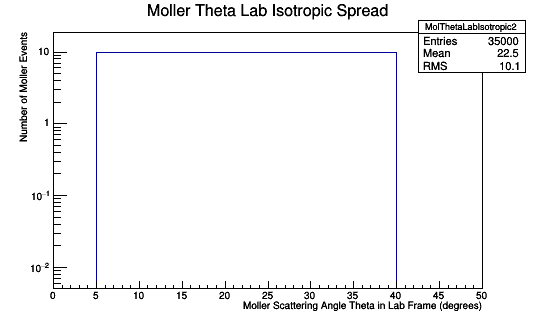
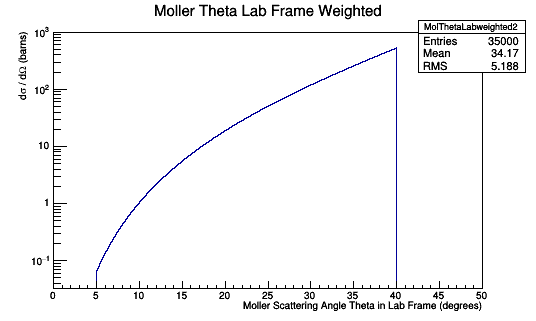
Applying weight to DC hits
Ideally, we would like to be able to recover the Moller differential cross section from DC hits. Since this occurs in the lab frame, we will use the differential cross section found in the previous section in this frame. Each hit in the DC is associated with a generated particle's angle theta, plotting this we find:
Below is a plot of Theta from GenPart if Moller hits any one DC Layer (event is only counted once no matter how many layers register a DC hit). The Moller X-sect is overlayed. The drift chambers appear to be less efficiency at detecting high angle Moller electrons.
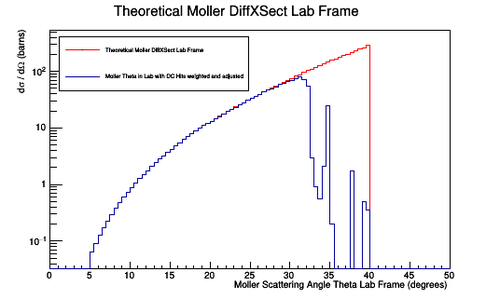
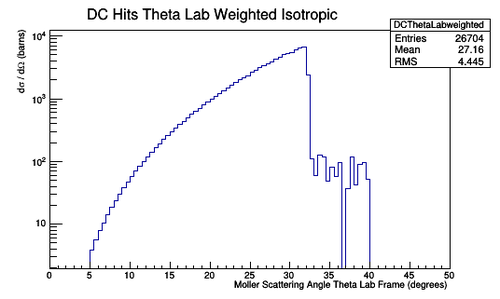
Below is what happens if you ask for all hits in the drift chambers to be plotted as a function of the moller electron angle. You see a lot more hits for the lower angle moller electrons. Perhaps the higher angle moller electrons are bending and missing the outer drift chamber.
Limiting the number of times the angle theta is counted, regardless of the amount of hits registered in the DC, we can apply a weight and renormalize the bins to obtain the Moller differential cross-section.
Below is a break down of the above weighted hits in each Region.
